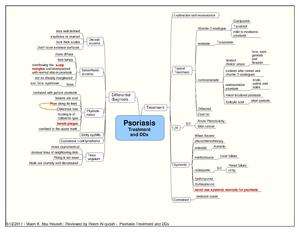Psoriatic erythroderma
| Psoriatic erythroderma | |
|---|---|
 | |
| Classification and external resources | |
| Specialty | dermatology |
| ICD-10 | L40.8 (ILDS L40.850) |
Psoriatic erythroderma (also known as erythrodermic psoriasis) represents a generalized form of psoriasis that affects all body sites, including the face, hands, feet, nails, trunk, and extremities.[1]:410–411[2]:195 First-line treatments for psoriatic erythroderma include immunosuppressive medications such as methotrexate, acitretin, or ciclosporin.[3]
See also
References
- ↑ Freedberg, et al. (2003). Fitzpatrick's Dermatology in General Medicine. (6th ed.). McGraw-Hill. ISBN 0-07-138076-0.
- ↑ James, William; Berger, Timothy; Elston, Dirk (2005). Andrews' Diseases of the Skin: Clinical Dermatology. (10th ed.). Saunders. ISBN 0-7216-2921-0.
- ↑ Zattra E, Belloni Fortina A, Peserico A, Alaibac M (May 2012). "Erythroderma in the era of biological therapies". Eur J Dermatol. 22 (2): 167–71. doi:10.1684/ejd.2011.1569. PMID 22321651.
This article is issued from Wikipedia - version of the 11/28/2016. The text is available under the Creative Commons Attribution/Share Alike but additional terms may apply for the media files.